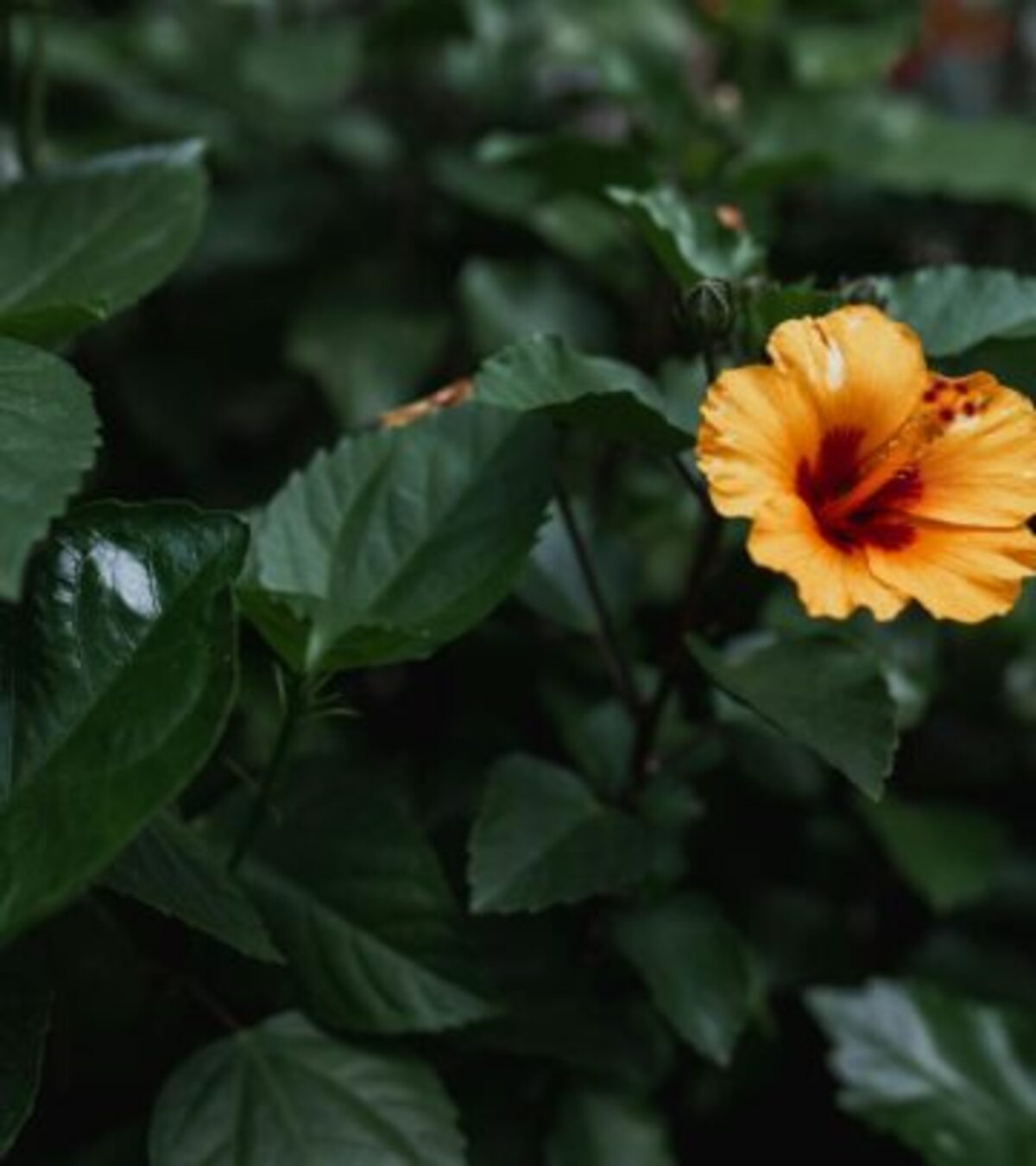Rose Of Sharon Vs Hibiscus: A Comprehensive Guide For Gardeners
Explore how Rose of Sharon and other Hibiscus species compare—botanical quirks, garden performance, hardiness, and essential care tips.

Rose of Sharon vs. Hibiscus: Understanding the Differences & Similarities
The vibrant, showy blooms of hibiscus plants are iconic sights in gardens across the world, but confusion often arises when comparing the popular Rose of Sharon with other hibiscus species. Are they the same plant? What makes each unique? In this comprehensive guide, we demystify the relationship between Rose of Sharon and hibiscus, exploring their distinct traits, origins, and how to make the right choice for your garden.
Botanical Background: What Is a Hibiscus?
The name Hibiscus refers to a large genus in the Malvaceae family, encompassing over 150 diverse species. This group includes everything from tropical showstoppers to cold-hardy perennials and even small trees. The genus is closely related to well-known plants like hollyhock, cotton, and cacao, all sharing some familial botanical characteristics.
- Family: Malvaceae (mallow family)
- Genus: Hibiscus
- Key Relatives: Hollyhock, cotton, cacao
- Range: Worldwide, with species adapted to both tropical and temperate regions
Introducing Rose of Sharon (Hibiscus syriacus)
Rose of Sharon, botanically known as Hibiscus syriacus, is one of the most widely cultivated hibiscus species in temperate gardens. Despite its name, it is neither a true rose nor limited to the Sharon region—it is firmly within the hibiscus family. This deciduous shrub is also marketed as shrub althea.
- Common Names: Rose of Sharon, shrub althea
- Botanical Name: Hibiscus syriacus
- Origin: East Asia
- Hardiness Zones: 5-8, occasionally zone 9
- Growth Habit: Deciduous shrub, can reach 8–12 feet tall
- Flowers: Typically smaller than tropical hibiscus, but available in many shades
Defining Hibiscus: More Than One Species
While many garden centers label certain plants simply as “hibiscus,” this most often points to the flamboyant Chinese hibiscus (Hibiscus rosa-sinensis), also known as tropical hibiscus. However, Rose of Sharon is technically a hibiscus, and there are other important types as well:
- Tropical Hibiscus (Hibiscus rosa-sinensis): Grown for its large, exotic flowers, needs warm climates (zones 10-11, sometimes 9) and is often treated as a container plant in colder areas.
- Hardy Hibiscus (Hibiscus moscheutos): Known as dinnerplate hibiscus for its enormous flowers, this perennial survives in zones 4-9 and is a favorite for temperate gardens.
- Other Hardy Species: Includes Hibiscus coccineus (scarlet hibiscus), Hibiscus grandifloras, and in some instances, Hibiscus syriacus is grouped here for its cold tolerance.
Key Point: All Rose of Sharon are hibiscus, but not all hibiscus are Rose of Sharon. Understanding which species or group you’re considering is crucial for proper plant care and design.
Comparing Rose of Sharon and Other Hibiscus Species
To effectively compare Rose of Sharon and hibiscus, let’s break down their traits across several categories—growth habit, flower size and shape, hardiness, and maintenance.
| Feature | Rose of Sharon (H. syriacus) | Tropical Hibiscus (H. rosa-sinensis) | Hardy Hibiscus (H. moscheutos, etc.) |
|---|---|---|---|
| Growth Habit | Deciduous shrub 8–12 ft tall | Evergreen shrub 4–10 ft tall | Herbaceous perennial 3–5 ft tall |
| Flower Size | Medium 2–4 in. single/double forms | Large 4–8 in. single/double forms | Very large up to 12 in. “dinner plate” size |
| Flower Shape | Funnel-shaped, often with a protruding stigma | Funnel-shaped, distinctive overlapping petals | Broad, flat, showy |
| Flower Colors | White, pink, lavender, blue, purple, bicolors | Red, orange, yellow, pink, white, bicolors | White, red, pink, bicolor |
| Hardiness Zones | 5–8 (sometimes 9) | 10–11 (occasionally 9) | 4–9 (sometimes 10) |
| Maintenance | Low; prune as needed, drought-tolerant | Moderate; needs regular water, sensitive to cold | Low to moderate; cut back after frost, needs moist soil |
| Winter Behavior | Deciduous; stems remain above ground | Evergreen in frost-free zones (dies in frost, often grown in pots) | Dies back to ground; regrows from roots in spring |
| Common Uses | Hedges, borders, specimen shrubs | Containers, tropical gardens, patios | Perennial beds, rain gardens, dramatic accents |
Is Rose of Sharon a Hibiscus?
This is one of the most common questions among gardeners. The answer: Yes! Rose of Sharon is a species within the Hibiscus genus (H. syriacus). While not as tropical-looking as Hibiscus rosa-sinensis, it displays the characteristic five-petal blooms and central stamens typical of hibiscus. Its cold hardiness and shrub form set it apart from many other hibiscus species traditionally grown for their showy, tender flowers.
Physical Appearance: Telling Them Apart
The similarities between Rose of Sharon and other hibiscus species can cause genuine confusion, but several botanical clues can help you distinguish them:
- Flower Size: Rose of Sharon blooms are generally 2–4 inches across, whereas tropical hibiscus flowers can be 4–8 inches, and dinnerplate hibiscus often exceeds 10 inches.
- Leaf Shape: Rose of Sharon leaves are typically three-lobed and slightly serrated, while tropical hibiscus leaves are shiny, oval, and often have smoother edges.
- Growth Form: Rose of Sharon forms a woody, upright shrub, while many other hibiscus are smaller or grow more loosely.
- Color Range: Both groups are available in various colors, but the brightest reds and oranges are more common in tropical types.
Hardiness and Climate Preferences
- Rose of Sharon: Thrives in USDA Zones 5–8, tolerates cold winters, and is often one of the hardiest hibiscus you can plant in temperate regions.
- Tropical Hibiscus (H. rosa-sinensis): Needs warm, frost-free conditions (USDA 10–11); in colder climates, it is best grown in pots and overwintered indoors.
- Hardy Hibiscus (H. moscheutos, etc.): Can be planted in zones 4–9, dies back to the ground during winter, but returns robustly each spring.
Location and zone are crucial factors for garden success. In general, Rose of Sharon and hardy hibiscus are excellent choices for gardeners outside subtropical or tropical climates.
Bloom Time and Flowering Habits
Rose of Sharon typically puts on a show from midsummer into early fall, filling the gap after many spring and early summer blooms have faded. The shrub can become covered in blooms for months, especially in full sun.
Tropical hibiscus flowers can appear year-round in warm climates, while hardy hibiscus tend to flower for an extended period in midsummer, coinciding with the peak of the growing season.
Maintenance & Care Needs
Both Rose of Sharon and other hibiscus species reward gardeners with their spectacular flowers, but their care routines differ in several important ways:
- Rose of Sharon:
- Requires minimal pruning, mostly to shape or remove dead wood.
- Moderately drought-tolerant once established.
- May self-seed prolifically if not deadheaded, potentially becoming invasive in some regions.
- Shrub remains standing in winter; no need to cut back to ground unless for rejuvenation.
- Tropical Hibiscus:
- Needs regular watering and fertilizing through the growing season.
- Sensitive to cold; move indoors or to a protected porch before frost.
- Light pruning encourages bushier growth and more flowers.
- Susceptible to pests like spider mites and whiteflies indoors.
- Hardy Hibiscus:
- Cut back dead stems in late fall or spring after new growth emerges (dies completely to ground in cold climates).
- Prefers consistently moist, rich soil.
- Low maintenance besides occasional division if clumps become crowded.
Pests, Problems, and Disease Susceptibility
All hibiscus species may face insect or disease troubles, but the type and severity can vary:
- Rose of Sharon is relatively resilient but can be affected by aphids, Japanese beetles, and leaf spots. Proper spacing and air circulation minimize issues.
- Tropical hibiscus is prone to spider mites, aphids, and fungal diseases, especially when overwintered indoors.
- Hardy hibiscus is susceptible to leaf-chewing beetles but is otherwise robust if kept in good soil.
Landscape Uses: Where Each Plant Shines
- Rose of Sharon is perfect for informal hedges, borders, privacy screens, and as a striking specimen plant. Its upright habit and multistemmed structure provide year-round interest, especially with late-season bloom.
- Tropical hibiscus adds an exotic flair to patios, decks, and entryways, where it thrives in containers and can be brought inside during winter.
- Hardy hibiscus makes a bold statement in perennial beds, waterwise landscapes, and mixed borders, especially where a punch of midsummer color is desired.
Choosing Between Rose of Sharon and Other Hibiscus
Your choice will depend on several factors:
- Climate: Gardeners in zones 5–8 will have the most success with Rose of Sharon or hardy hibiscus. Subtropical and tropical regions can enjoy the diversity of tropical hibiscus year-round.
- Garden Style: For low-maintenance hedges or privacy screens, Rose of Sharon is hard to beat. For splashy, tropical accents in pots, opt for Chinese hibiscus. If you want dinner-plate size blooms and don’t mind cutting back in fall, try hardy hibiscus species.
- Space & Size: Rose of Sharon grows tall and narrow; hardy hibiscus tends to stay shorter and wider. Tropical types can be pruned and shaped in pots.
Frequently Asked Questions (FAQs)
Q: Are Rose of Sharon and Hibiscus the same plant?
A: Rose of Sharon (Hibiscus syriacus) is a member of the hibiscus genus, but many other species (like tropical hibiscus and hardy hibiscus) exist in the same group. Rose of Sharon is most notable for its shrub form and cold tolerance.
Q: How can I tell Rose of Sharon from other hibiscus?
A: Look for a shrub with three-lobed leaves and medium-sized, funnel-shaped blooms. Tropical hibiscus typically has larger, glossier leaves and bigger, flamboyant flowers. Hardy perennial hibiscus (dinnerplate hibiscus) blooms are much larger and the plants die back to the ground in winter.
Q: Which hibiscus is best for cold climates?
A: Choose Rose of Sharon or hardy hibiscus varieties like H. moscheutos. These are bred for winter hardiness and reliably return after frosts.
Q: Are all hibiscus plants edible?
A: Not all. While some hibiscus species produce edible flowers and leaves (like H. sabdariffa, used for hibiscus tea), always research the specific species before consuming any plant part.
Q: Can Rose of Sharon become invasive?
A: In some regions, yes. Rose of Sharon can self-seed prolifically, so deadheading spent blooms and removing seedlings helps manage unwanted spread.
Summary: Which Should You Grow?
Both Rose of Sharon and other hibiscus species bring drama and color to gardens, but their ideal uses differ. If you value an easy-care, hardy shrub that blooms late in the year, Rose of Sharon is your plant. For container gardening and tropical style, try Chinese hibiscus. For jaw-dropping, dinner plate-sized flowers in the heart of summer, nothing beats a hardy perennial hibiscus.
By considering your climate, design needs, and maintenance preferences, you can find the perfect hibiscus for your landscape and enjoy bold, beautiful flowers from late spring through frost.
References
Read full bio of medha deb












